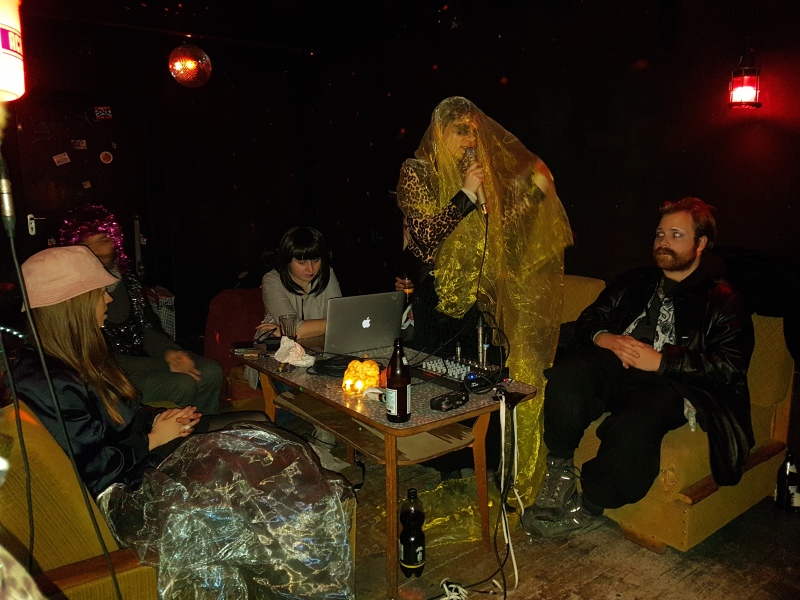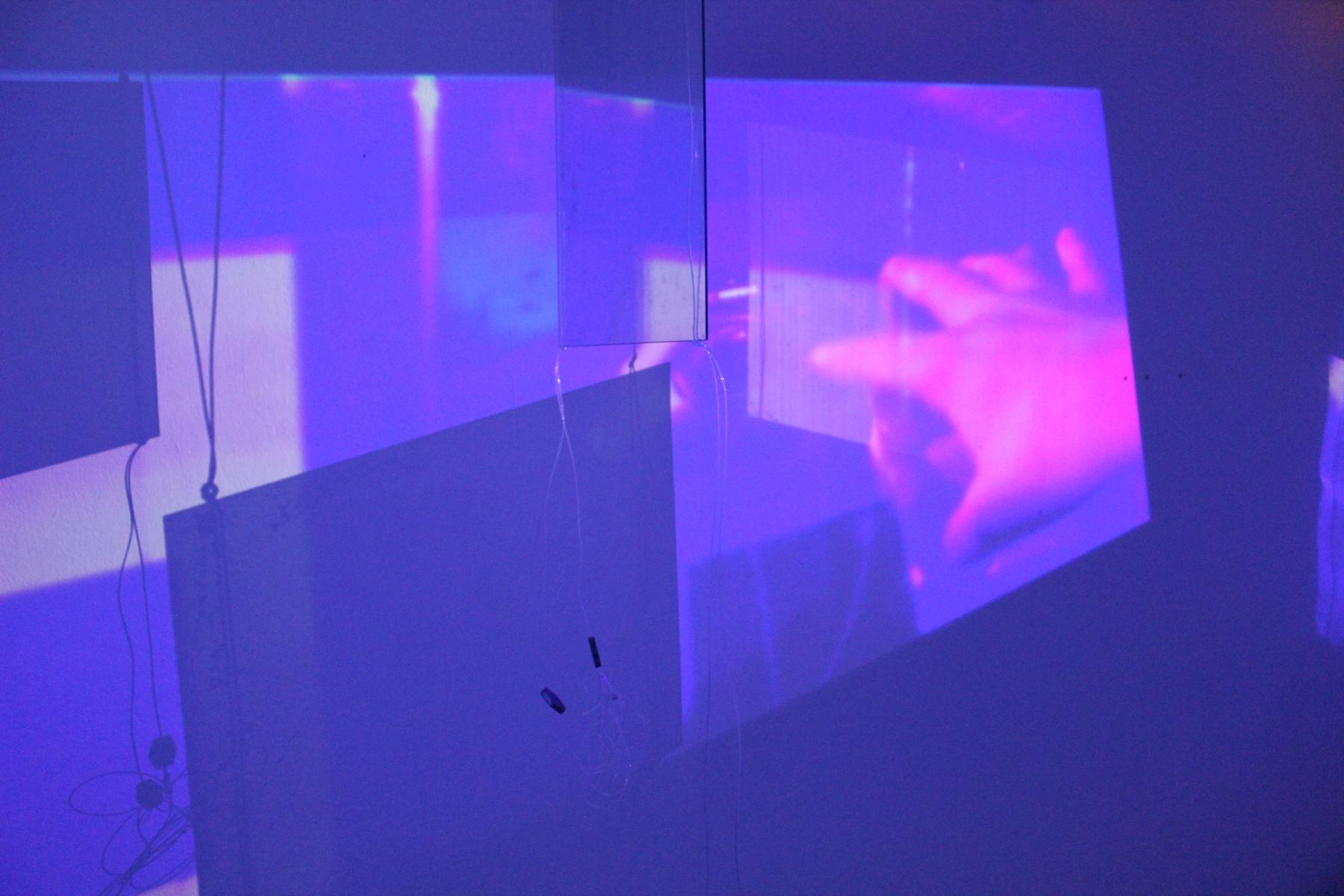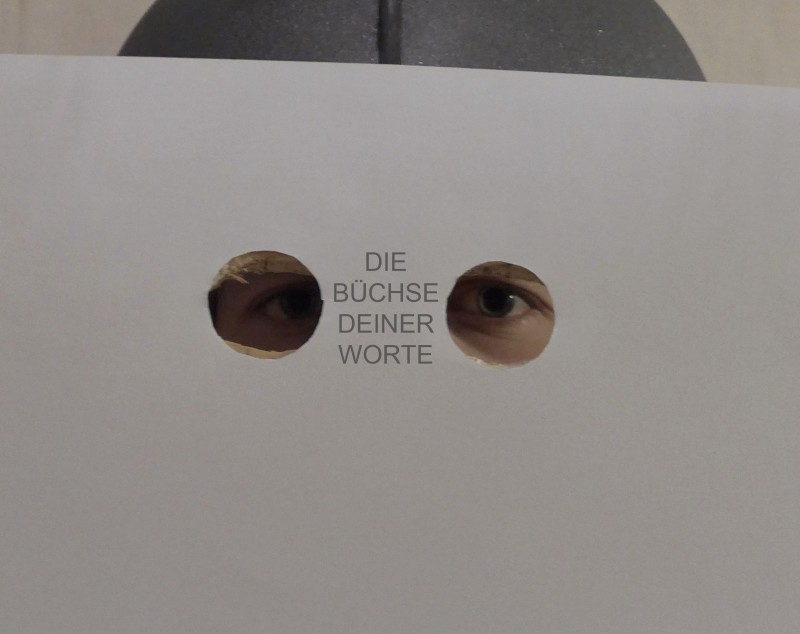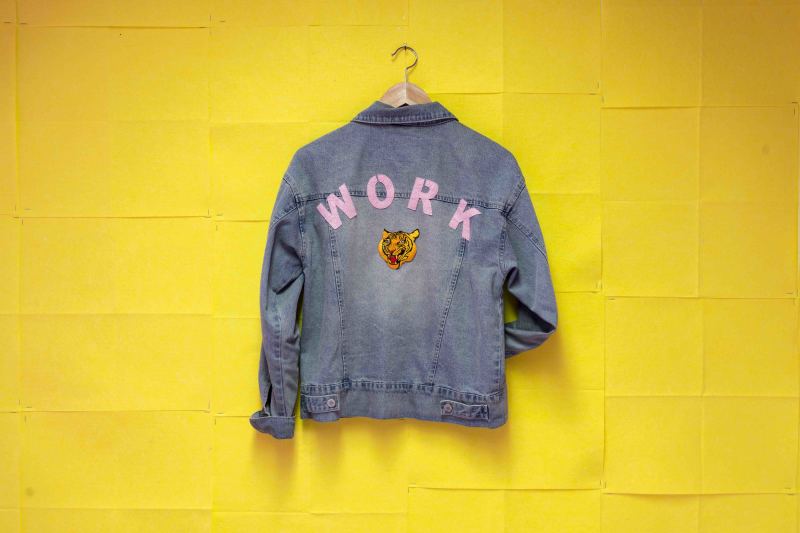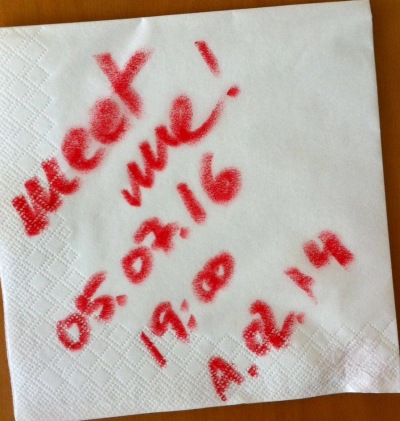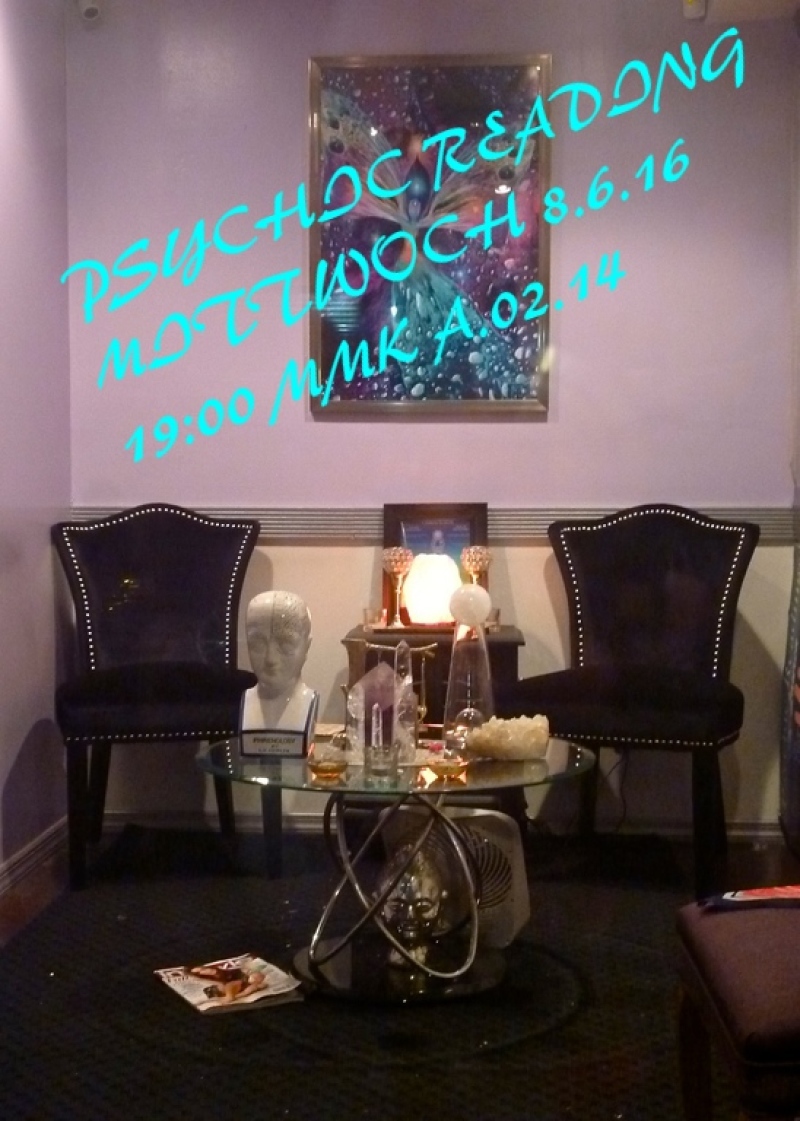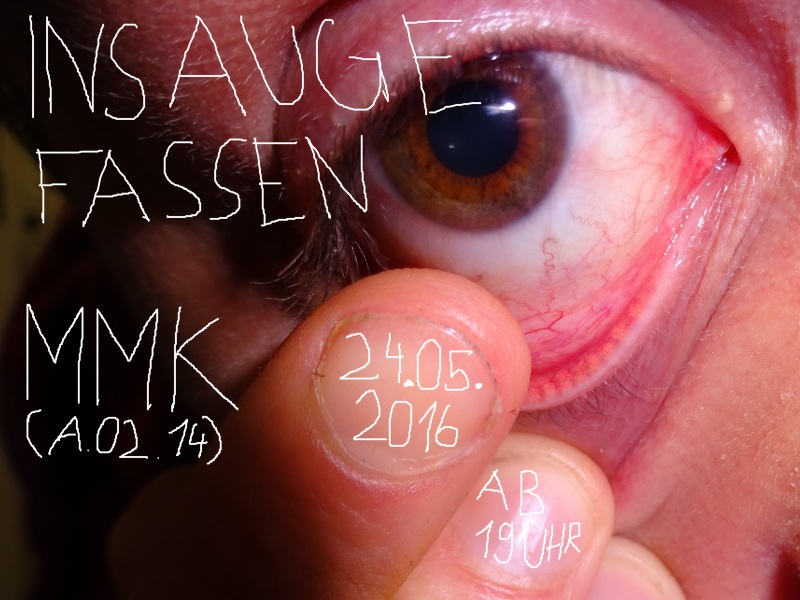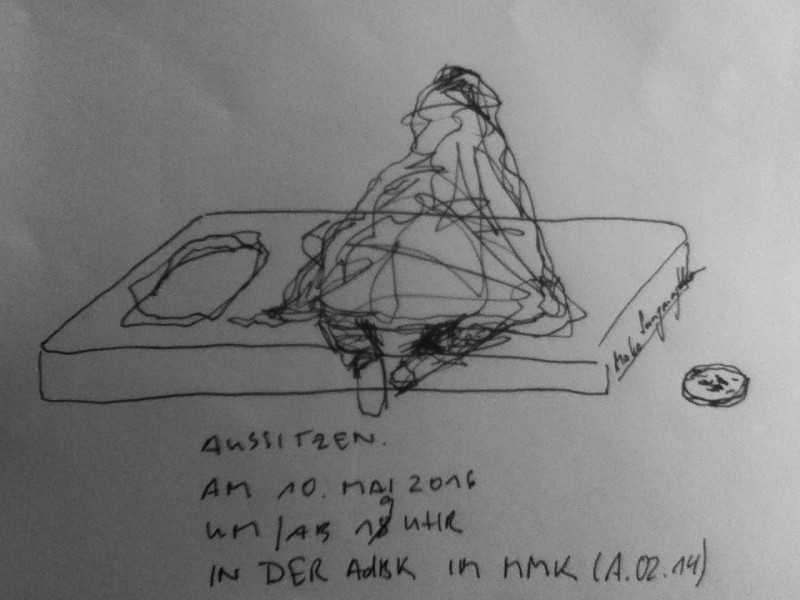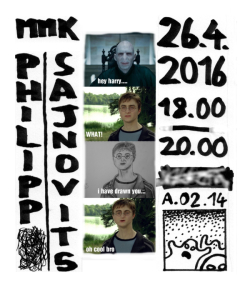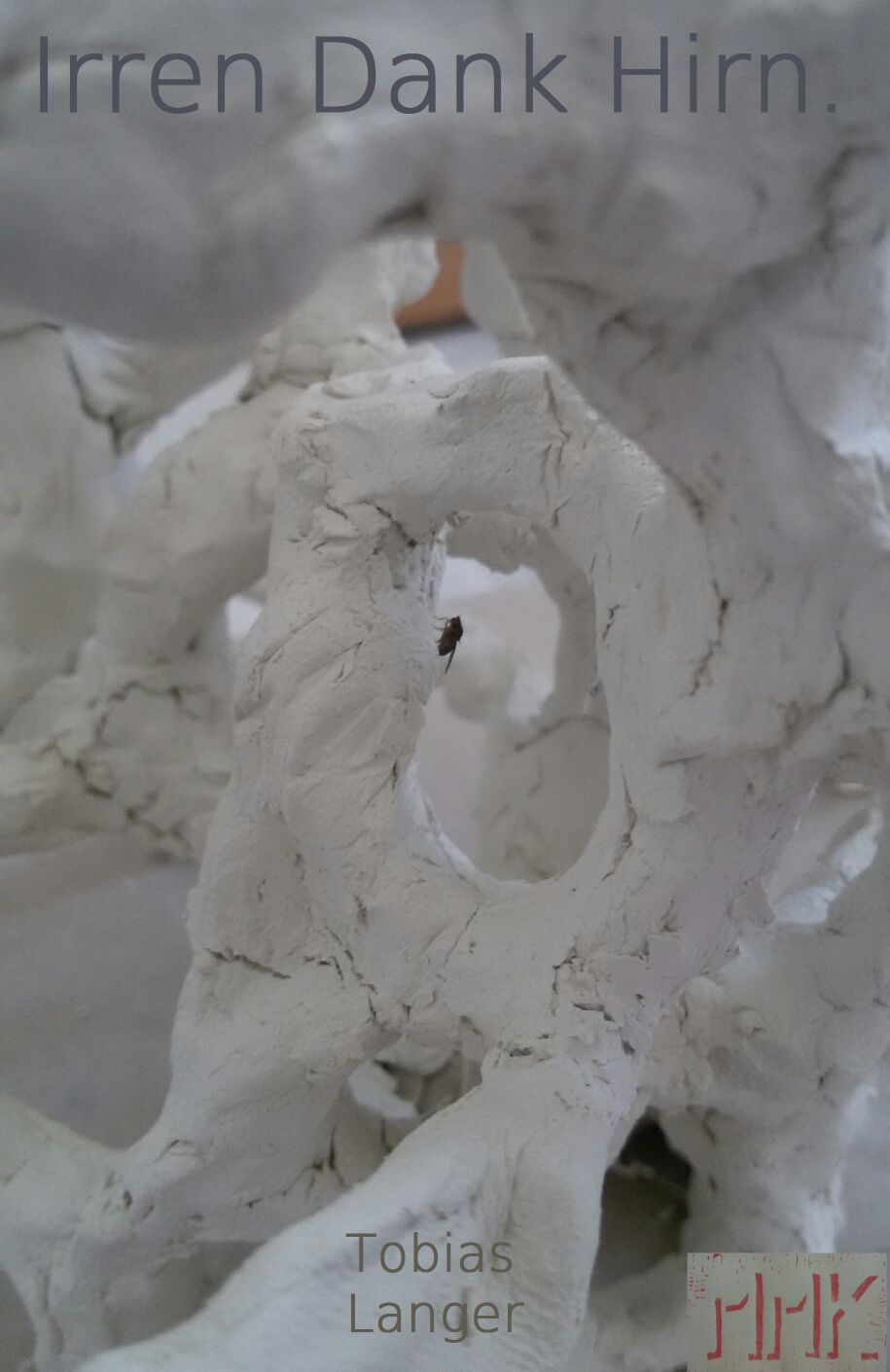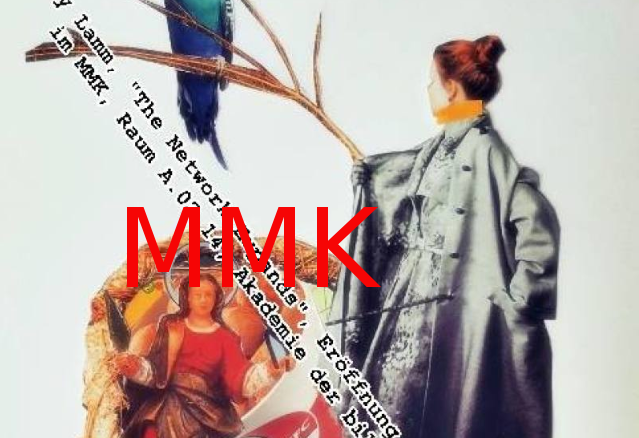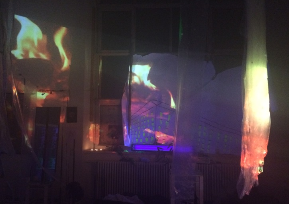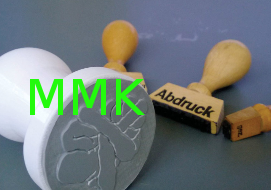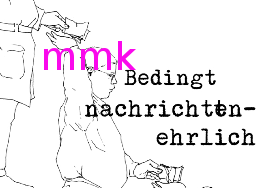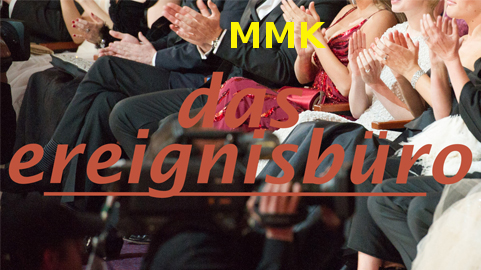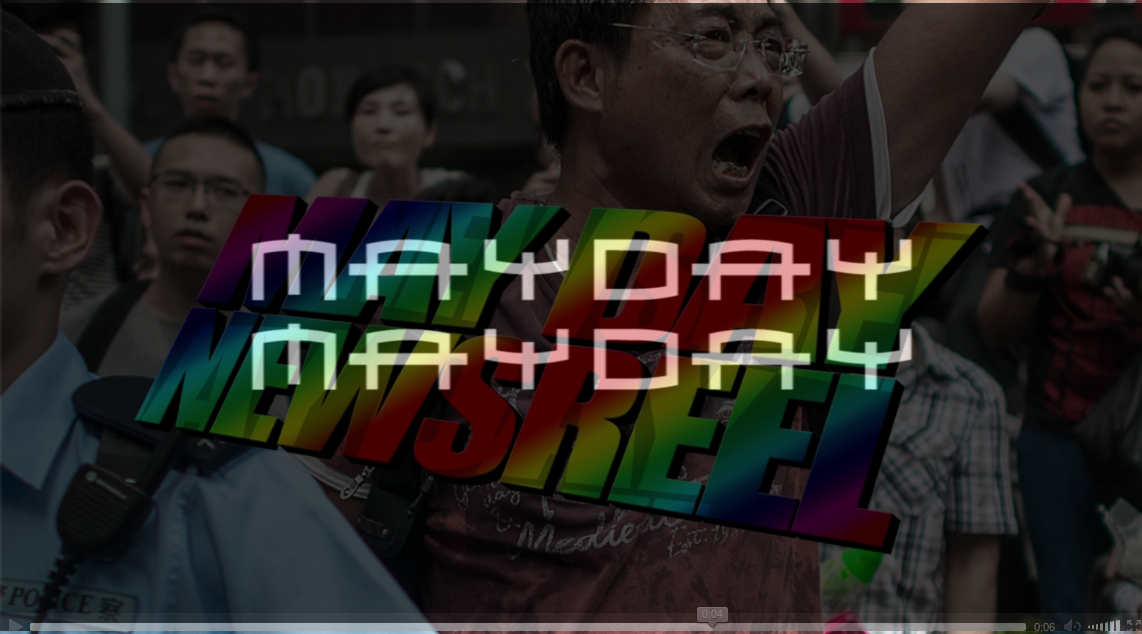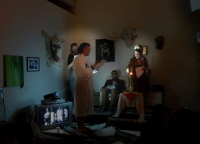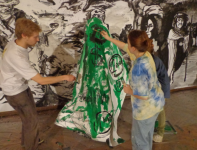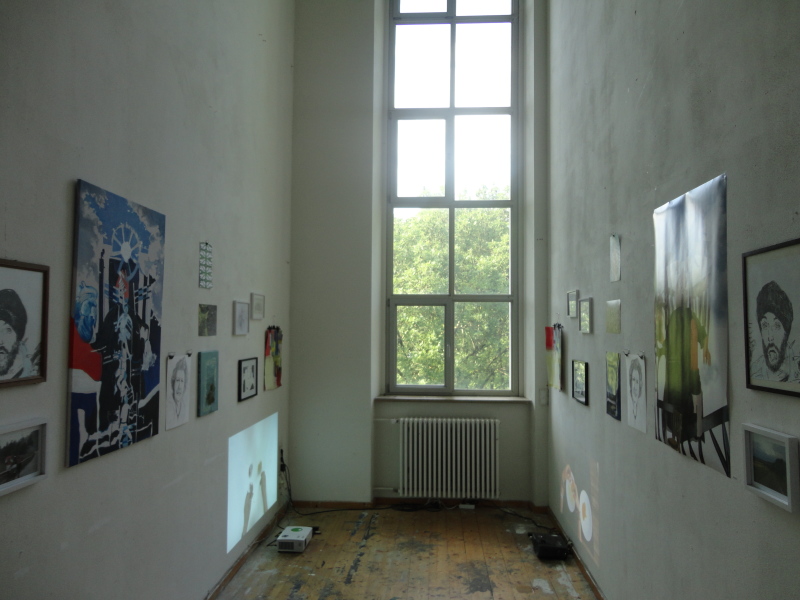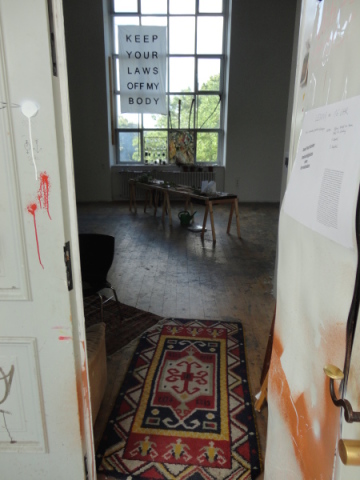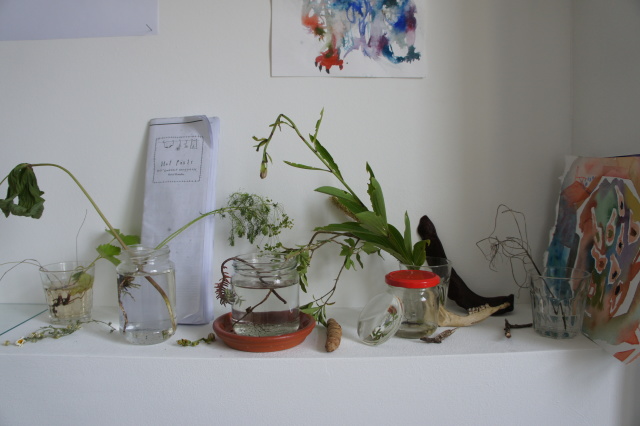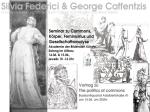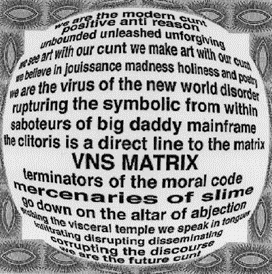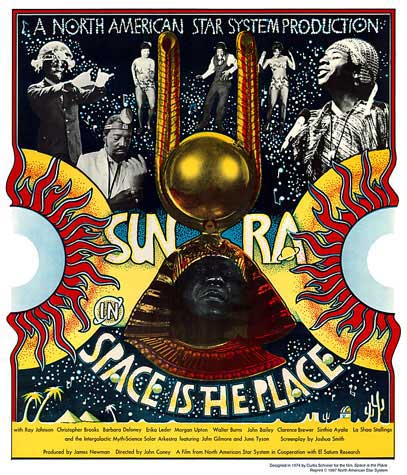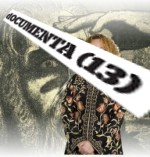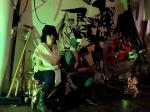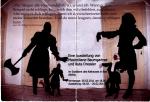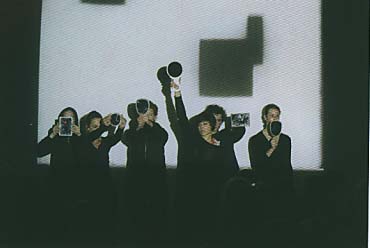
K2 Aufbau Organisation, Bohemian Lobotomy, 2006. Performance view, Frieze Art Fair, London, 2006. Photo: Polly Braden.
- 2006 Bohemian Lobotomy (performance, film) : The Artists Cinema, curated by Ian White, im Rahmenprogramm der Frieze Artfair.
- Downloads: showstudio . deutsch : avi datei . english : avi file . deutsch: iso datei
siehe auch: - Oskar Schlemmer : Meta oder die Pantomime der Örter?. Der Text der in Bohemian Lobotomy eingang fand
- k2ao in der galerie für landschaftskunst hamburg
- Beitrag auf Showstudio leider schlecht zusammengeschnittenen
- die ganze Kritik im Artforum 12/2006 hier der relevante Auszug:
Yet despite the operative assumption that all possible aesthetico-political challenges to the fair will produce, at best, only a fleeting market fluctuation, something more than that emerged from this year's welter of artist's projects. As part of the LUX screening series, K2 Aufbau Organisation (k2ao, a collaborative out of the Kunstakademie München) presented Bohemian Lobotomy, 2006, a work made as a specific response to Frieze that wasn't smooth and spectacular like value-adding "art fair art." Bohemian Lobotomy is a film-performance that came out of the group's research on Munich's bohemian period, which culminated in the Munich Soviet Republic of 1919. Superficially, the film echoes the appropriation theme of the Tate Triennial, assembling fragments from old film, theater, and literature into deftly orchestrated, disjunctive, uncomfortable combinations of live performance, film strategies, and polemic texts. Structured as a series of vignettes orbiting this period of revolutionary aesthetic and spiritual ideas, but also referencing Frieze, Art Basel, and Oktoberfest, the work's power resides, perhaps, in its departure from the premise that the early twentieth-century bohemians and their critical outsider position vis-a-vis bourgeois society now provide the model and lifestyle for today's status quo. Theorists have alternately identified this paradox as "commodified dissent" and as the recuperation of artistic critique within the "new spirit of capitalism." Strikingly, the historical theater, music, and dance performances that the group reperforms often occur as mise en abyme: For instance, when an audience files into a theater within the film, in order to watch the film we are already watching—either within the film or through performances in the cinema— the duplication gives a sense of second-order remove, encoding a distance and self-reflexivity that implies critique, which in turn, crucially, brings us back to the absorption and corn-modification of the bohemia/avant-garde. At one point, live performers stand in front of the screen, holding up mirrors so as to reflect the beams of light from the film projector back onto the audience like spotlights, asking, at the same time, "Where are you?" and intoning the names of a series of dead political agitators and bohemians. The past is mirrored continuously and becomes a means to scrutinize the boho art fair audience, on whom it is dawning that they are implicated in the work's theme. Here the dead, the rev-enants of history, maintain their hold on the present and inform the present. But just as much appropriation serves as a kind of life support, if you will, for art, the centrality of bohemian marginality embodies another persistence—the way in which critical positions feed and reinforce the present system. Another vignette spoofs art fairs—two cartoon silhouettes of professional artists meet at the fair and deal each other blows while bragging about their recent shows and achievements. Growth, transformation, and undead states of art abound this year. Beware the zombies.
MELANIE GILLIGAN IS A LONDON-BASED ARTIST.
(:includeSite http://societyofcontrol.com/x404/k2ao_lsk/index.htm width=100% height=515 border=0 scrolling=no:)
BOHEMIAN LOBOTOMY
k2 Aufbau Organisation
k2 Aufbau Organisation is an artists’ collective from Munich. Founded in April 2005 they have been collaborating on artistic research projects since then. The group’s inquiry into recent changes in the idea of the public sphere takes place against the backdrop of our globalised, localised and fragmented playgrounds. Considering the impact of 'lifestyle' as a new ideology of self-fulfilment and liberation, k2 Aufbau Organisation has investigated the Munich Bohemia leading to the Munich soviet republic of 1918/19 and present a video/performance work derived from this.
At the turn of the 19th century, Munich had the most vigorously booming art market and was in competition with Paris for the coolest place to be a bohemian. Art Nouveau, the Cosmic Circle, Aesthetic Fundamentalism and a lively cabaret scene were the pus-filled pimples on the face of the empire of the day (the Wilhelminian Reich). Some of these activities were perhaps no more than cosmetic irritations, whilst others, purposely or otherwise, contributed to the venomous flow that poisoned most of the brains in Europe. And then, after the common man realised that carnage was no fun and militarism and nationalism went out of fashion in the autumn/winter season of 1918 – then it happened: a group of artists and intellectuals succeeded in introducing a homemade soviet republic - peacefully. So anarchy ruled for a few months – but eventually the bloodbath resumed and the rotting corpses of workers and artists, this time involuntarily, made Munich a fertile ground for more disasters to come.
Having looked at various ways in which new and sometimes fragile artistic ideas can be exploited, both today and back in the first half of the 20th century, it appears that the artist’s scope for action has always been extremely narrow. Questioning these phenomena, as well as pre-conceptions of the "new" in art, k2 Aufbau Organisation tries to explore the boundaries of the artist’s range of activity.
Bohemian Lobotomy is a special presentation of The Artists Cinema.
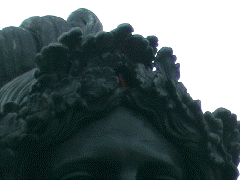 |

